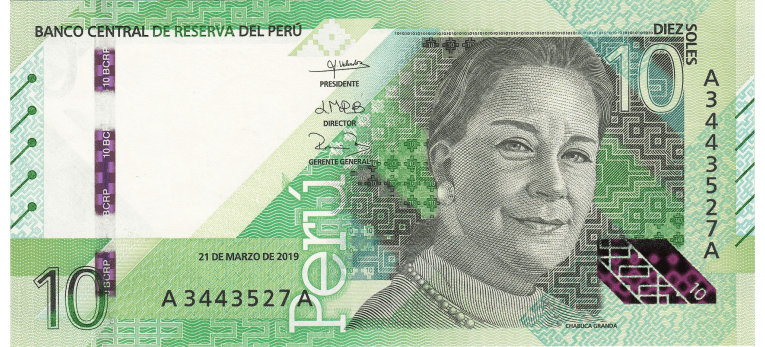Introduce país o moneda de destino:



El nuevo sol es la moneda oficial de Perú desde 1991 y se divide en 100 céntimos. Su símbolo es S/ y la gestiona y emite el Banco Central de Reserva del Perú. El nuevo sol (PEN) sustituyó al inti tras la creación de esta institución. En 2015, la moneda pasó a llamarse «sol».

Los billetes de Perú actuales son de 10, 20, 50, 100 y 200 soles. En los anversos aparecen personas relevantes del Perú, mientras que en el reverso hay lugares, animales o monumentos. La última serie de billetes se emitió en 2019 y todos son de papel.

Actualmente, las monedas de soles en circulación son de 1, 5, 10, 20 y 50 céntimos, así como de 1, 2 y 5 soles. Las dos primeras dejaron de emitirse en 2011 y 2018, respectivamente. Sin embargo, aún es posible encontrarlas. Hoy en día conviven varias series de monedas

El billete de 200 soles muestra a Santa Rosa de Lima, santa católica patrona de la capital de Perú. En el reverso aparece el templo de Santo Domingo, de gran relevancia en su beatificación. Es de los pocos billetes del mundo en los que se muestra una figura religiosa.

El Banco Central de Reserva del Perú ha puesto en marcha un plan de difusión del patrimonio del país. Para ello, emite desde 2010 la serie de monedas «Riqueza y Orgullo del Perú», que muestra atractivos como Machu Picchu, el tumi de oro o los templos incas más relevantes.




*Los billetes y monedas corresponden a la serie emitida más nueva y son de referencia. Pueden variar los colores y pueden existir más diseños de los que se muestran.